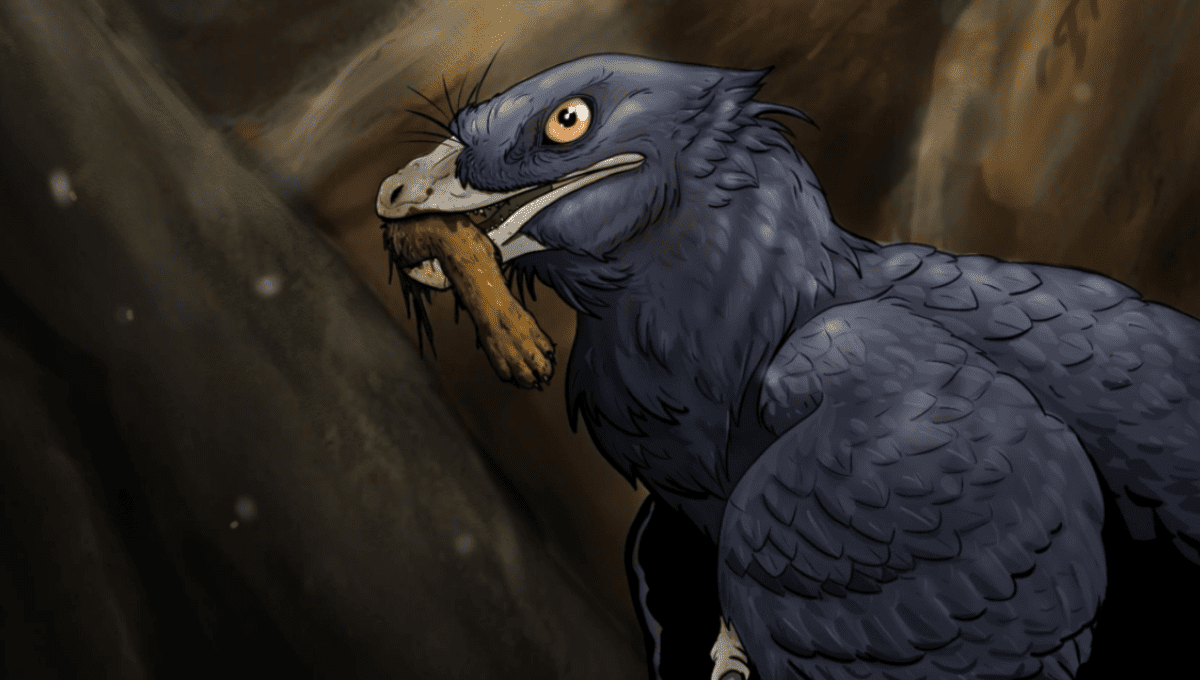
A foot inside the ribcage of a microraptor is believed to be the earliest known evidence of a dinosaur eating a mammal. Microraptors were small, feathered dinosaurs, and this one was about the size of a crow – but that didn’t stop it from swallowing the foot of an ancient mammal shortly before it died.
The predatory species was Microraptor zhaoianus, a small, four-winged dromaeosaurid dinosaur that lived in what is now China during the Early Cretaceous. Around 120 million years ago it was swooping through the canopy gliding tree-to-tree in search of prey, with a taste for small vertebrates.
Evidently, one of those was a mouse-sized ancient mammal whose foot was found tucked inside the ribcage of a microraptor fossil. That specimen was actually first described in the year 2000, but it wasn’t until two decades later that someone spotted the foot of its last meal hiding within.
Professor Hans Larsson of McGill University in Montreal was the first to spot the curious finding. Now, with the help of Dr David Hone of Queen Mary University, London, and colleagues from Canada, the USA, and China, they have been able to piece the puzzle together.
Bone analyses revealed that one of the last things the microraptor ate included the foot of a small animal. The foot was almost complete and looks like one belonging to a ground-dwelling mammal. Microraptors have historically been found to have an appetite for other small vertebrates like birds, lizards, and fish, and now we can add mammals to the menu.
Whether the footless mammal was hunted by the microraptor, or its remains were scavenged on, isn’t clear. However, the pivotal finding both widens the known tastes of microraptors and pushes back the earliest known evidence of a dinosaur eating a mammal. It also demonstrates that were they alive today, microraptors would be a nightmare for local wildlife.
“The great thing is that, like your housecat which was about the same size, Microraptor would have been an easy animal to live with but a terror if it got out as it would hunt everything from the birds at your feeder to the mice in your hedge or the fish in your pond,” said Dr Alex Dececchi from Mount Marty College in a statement.
Not ideal pets, then, but this microraptor lives on as a remarkable fossil that’s captured a rare insight into Early Cretaceous life.
“It’s so rare to find examples of food inside dinosaurs so every example is really important as it gives direct evidence of what they were eating,” said Hone in a statement.
“While this mammal would absolutely not have been a human ancestor, we can look back at some of our ancient relatives being a meal for hungry dinosaurs. This study paints a picture of a fascinating moment in time – the first record of a dinosaur eating a mammal – even if it isn’t quite as frightening as anything in Jurassic Park.”
The study was published in the Journal of Vertebrate Paleontology.
Source Link: Foot Inside Ribcage Marks Earliest Evidence Of A Dinosaur Eating A Mammal